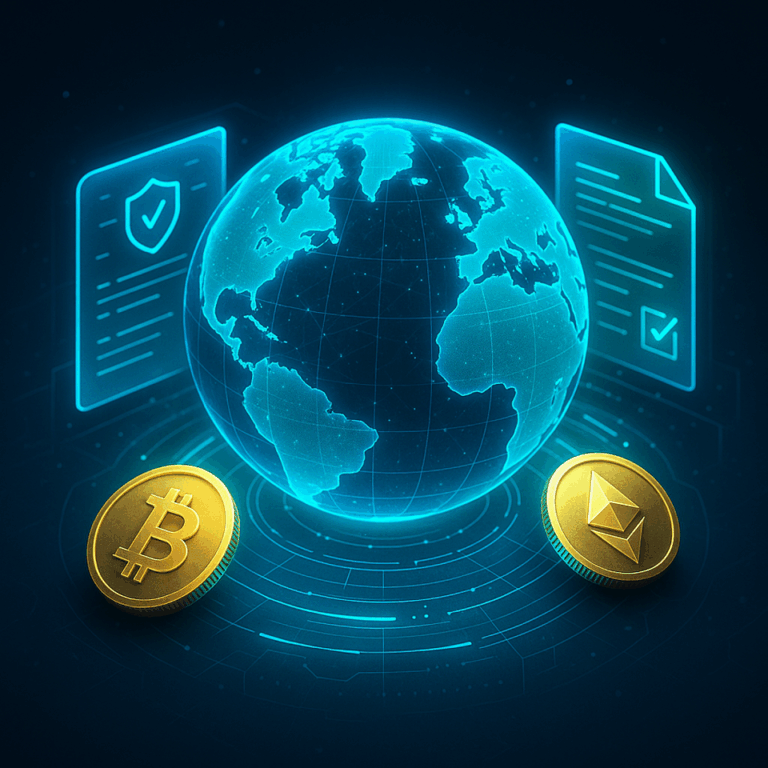Blockchain interoperability refers to the ability of different blockchain networks to communicate and share data with one another. In the early years of cryptocurrency, blockchains operated in isolation, each with its own ecosystem and rules. By 2025, the landscape has changed dramatically. Interoperability has become one of the most critical developments driving the next stage of crypto evolution.
As decentralized applications, digital assets, and smart contracts continue to grow, the need for seamless cross-chain communication is essential. Interoperability allows users to transfer assets and data across multiple blockchains without intermediaries, reducing friction and increasing efficiency. It enhances liquidity, fosters collaboration among protocols, and promotes innovation across the decentralized finance (DeFi) ecosystem.
This connectivity marks a fundamental shift toward a unified, user-friendly digital economy that bridges the gap between isolated blockchain environments.
Why Interoperability Matters in the Crypto Ecosystem
Breaking Down Fragmentation
Before interoperability, blockchains functioned like independent islands. Assets created on one chain—such as Bitcoin or Ethereum—could not easily move to another. This fragmentation limited the scalability and usability of decentralized systems. In 2025, cross-chain solutions enable the smooth transfer of tokens, data, and smart contract instructions, unlocking greater utility and adoption.
Expanding Liquidity and Utility
Liquidity is a vital component of any financial system. Interoperability enhances liquidity by connecting decentralized exchanges, lending protocols, and liquidity pools across different chains. Users can now move capital freely, optimizing yield and diversifying assets without relying on centralized bridges.
Accelerating Innovation
When blockchains communicate seamlessly, developers can combine the strengths of multiple networks. For instance, a project might use Ethereum for smart contracts, Solana for scalability, and Chainlink for data oracles—all within a single integrated framework. This collaborative approach accelerates innovation and creates more robust decentralized applications.
Technologies Powering Blockchain Interoperability in 2025
Cross-Chain Bridges
Cross-chain bridges were the first major step toward interoperability. These bridges enable token swaps and asset transfers between distinct blockchains. In 2025, next-generation bridges use advanced cryptography, multi-signature security, and decentralized validation to prevent vulnerabilities and improve speed.
Inter-Blockchain Communication (IBC) Protocols
Protocols like the Cosmos IBC and Polkadot’s Relay Chain have established new standards for interoperability. They enable networks to exchange data securely and efficiently without centralized oversight. These systems are now being adopted by enterprise solutions and public blockchains alike, forming the backbone of the interconnected crypto ecosystem.
Wrapped Tokens and Layer-2 Integrations
Wrapped tokens—digital representations of assets from one blockchain on another—continue to play a significant role. In 2025, Layer-2 solutions such as rollups and sidechains allow for scalable, low-cost cross-chain transactions. This architecture enhances network performance and supports real-world applications such as decentralized identity systems and tokenized finance.
Oracle Networks
Oracles act as the bridge between blockchains and external data sources. Modern decentralized oracle systems allow multiple chains to access the same real-time information, from asset prices to weather conditions, enabling smart contracts to execute across networks with synchronized data.
The Role of Interoperability in Decentralized Finance (DeFi)
DeFi platforms depend heavily on interoperability to operate efficiently. Cross-chain integration allows users to access diverse financial products—such as lending, staking, and derivatives—without being confined to a single network.
In 2025, multi-chain DeFi ecosystems are emerging as the new standard. Users can deposit collateral on one blockchain, borrow assets from another, and stake rewards on a third—all through a unified interface. This flexibility enhances capital efficiency and opens new opportunities for global users.
Interoperability also supports institutional adoption by providing secure frameworks for transferring digital assets between private and public blockchains, maintaining compliance while preserving decentralization.
Challenges to Achieving Full Interoperability
While progress has been substantial, full interoperability remains a complex goal.
Security remains a top concern. Cross-chain bridges and protocols can be vulnerable to exploits if not properly designed or audited. In 2025, developers are focusing on decentralizing validation mechanisms and implementing zero-knowledge proofs to improve trustless communication.
Standardization is another challenge. Different blockchains use unique consensus mechanisms, transaction formats, and coding languages. Achieving universal standards for communication requires coordination between developers, institutions, and regulators worldwide.
Scalability also plays a role. As the number of interconnected blockchains grows, maintaining fast and cost-effective transactions across networks becomes increasingly difficult. Layer-2 and modular blockchain solutions are addressing this by distributing workloads across specialized layers.
Regulatory and Institutional Perspectives
Governments and regulators are taking a keen interest in interoperable blockchain systems. Interoperability can enhance transparency, traceability, and compliance by allowing authorities to verify transactions across multiple chains while respecting privacy protocols.
Institutions are adopting interoperability frameworks to connect traditional finance with blockchain networks. Tokenized bonds, real estate assets, and stablecoins are being integrated into interoperable systems, allowing for seamless global transfers and improved liquidity.
In 2025, many central banks exploring digital currencies (CBDCs) are designing them with interoperability in mind, ensuring that national digital currencies can operate within global decentralized infrastructures.
The Future of Blockchain Connectivity
The future of crypto lies in collaboration, not competition. As interoperability matures, blockchain networks will function as interconnected components of a broader digital economy. This evolution will unlock new opportunities for innovation in DeFi, gaming, supply chain management, and global trade.
Emerging technologies such as quantum-resistant cryptography, AI-driven data routing, and autonomous interoperability hubs will further enhance cross-chain performance. The result will be a financial internet—an open, secure, and transparent ecosystem where assets move freely across borders and blockchains.
Conclusions
Blockchain interoperability is transforming crypto from isolated ecosystems into an interconnected financial network. In 2025, it stands at the core of innovation, scalability, and global adoption. By enabling communication between diverse chains, interoperability fosters collaboration, liquidity, and efficiency across the decentralized economy.
While challenges remain—such as security risks and standardization—technological and regulatory advancements are steadily overcoming these barriers. As blockchains become increasingly interconnected, interoperability will pave the way for a new era of digital finance defined by inclusivity, transparency, and seamless global integration.



